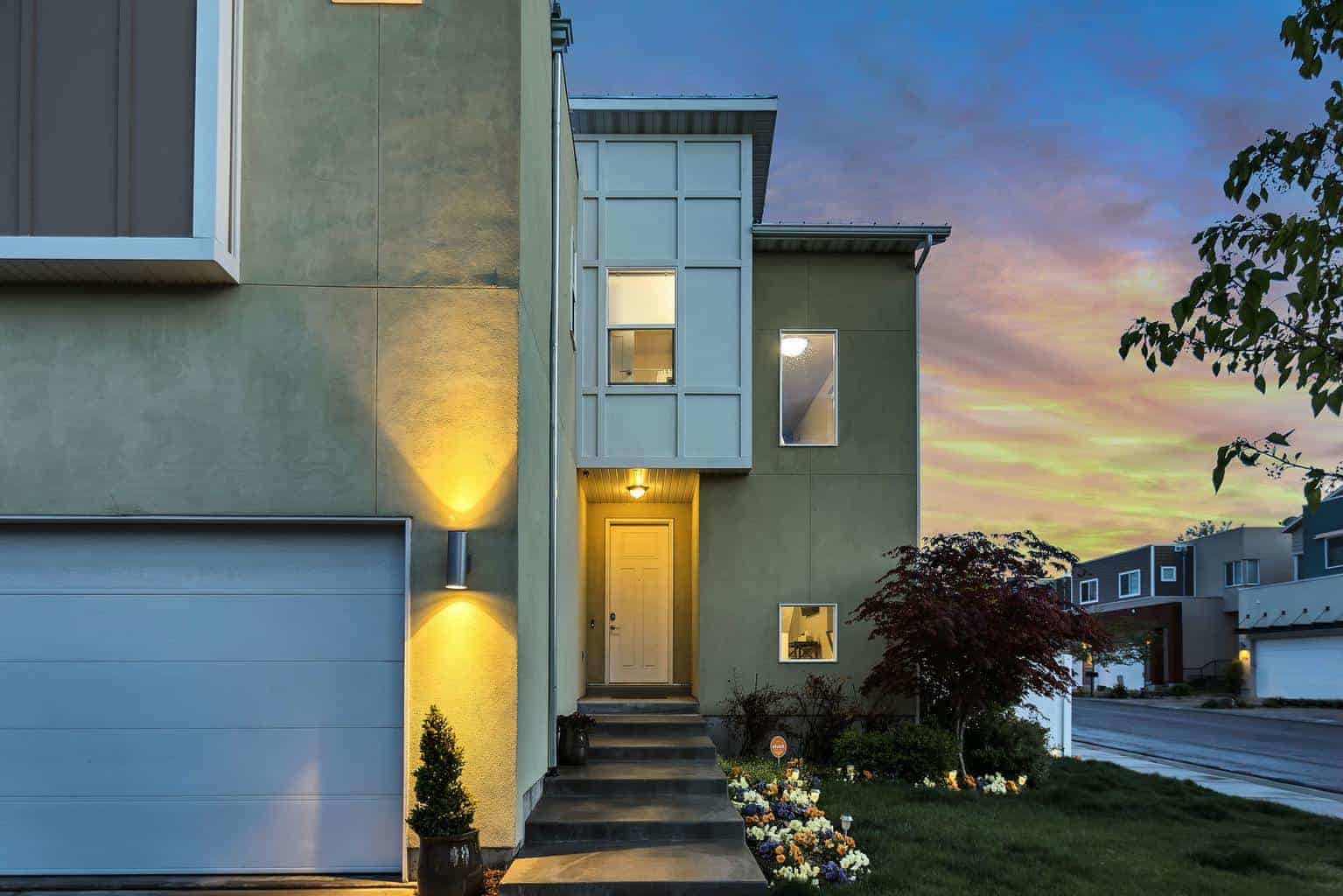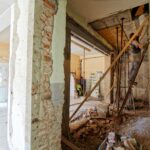Have you scoped out the housing market and determined a fixer-upper is the most affordable option?
There’s a possibility you’re concerned about the cost of home repairs and upgrades. And despite having a sufficient amount in your savings account, you’d prefer a loan product to help cover the expenses.
Fortunately, there are conventional rehab loan products to lend a helping hand.
What is a Conventional Rehab Loan?
With a conventional rehab loan, you can finance both the purchase of a new home and the cost of renovations with a single mortgage product. This means you won’t have to take out a second mortgage or pay for costly home improvement projects out of pocket. It’s a convenient and cost-effective way to achieve your dream home without breaking the bank.
Funds are provided through private lenders and banks and can be used to pay for cosmetic and structural upgrades.
How Does a Conventional Rehab Loan Work?
Here’s what to expect with a conventional rehab loan:
- Step 1: Apply for a loan product. If you’re pre-approved, the lender will notify you of the loan terms, including the required down payment.
- Step 2: Retrieve contractor plans for the renovation project and submit them to the lender for approval.
- Step 3: If the plans are approved, the lender sends an appraiser to assign an after-repair value (that considers the contractor’s plans).
- Step 4: Close on the home and commence renovations. They should be completed within six months, but some lenders permit the contract to spend up to a year on approved projects.
Types of Conventional Rehab Loans
Homebuyers can choose from two types of conventional rehab loans.
Fannie Mae HomeStyle Renovation Loan
The Fannie Mae HomeStyle Renovation Loan can be used to cover upgrade costs on a home you own or plan to buy. It is limited to 95 percent of the homes’ after-renovation value. The loan comes with an adjustable or fixed interest rate that’s typically lower than what you’ll get with a home equity loan or line of credit. And you’ll get a 15- or 30-year loan term.
Instead of taking out two separate loans, you’ll roll the purchase price and renovation costs into a single mortgage product. That means you’ll only pay closing costs once, and you’ll have a single monthly housing payment. However, you’ll have to refinance your existing mortgage if you already own the home, which means you could end up with a higher interest rate.
Loans are capped at $548,250 in most markets for single-family properties. However, you could borrow as much as $822,375 if the property is in a more pricey market. It increases to $685,400 for four-unit properties and caps at $1.5 million in high-priced real estate markets. (Quick note: upgrades on manufactured homes are limited to $50,000 or 50 percent of the anticipated property value after renovations are complete).
It can be used to complete most home upgrades and temporary living expenses during construction within six to 12 months of the closing date. However, borrowers are prohibited from building a second property, making temporary improvements or demolishing the property with the loan proceeds.
You’ll need a 620 credit score to qualify. And ideally, your debt-to-income ratio should be no more than 45 percent.
Freddie Mac CHOICERenovation
The Freddie Mac CHOICERenovation loan covers renovation costs on investment properties, second homes and multi-unit properties. It allows you to borrow up to 95 percent of the home’s after-renovation value.
You can use the loan proceeds on a property you plan to purchase or that you already own. But if it’s the latter, you’ll need to refinance your existing mortgage, and you could get a higher interest rate than you currently have.
The upside is this loan product is more flexible than the Fannie Mae HomeStyle Renovation Loan. You can use the funds to make most upgrades, and you can cover the costs of renovations that will shield the property from sustaining severe damages if a natural disaster strikes. The cost of repairs for damages caused by natural disasters is also covered.
Loan terms of 15 or 30 years are available. You’ll need at least 3.5 percent down, a credit score of 660, and your debt-to-income ratio should not exceed 43 percent. Are you planning to complete the renovations on your own? You could be eligible for a down payment credit if you finish the job before closing.
What’s The Difference Between a Conventional Loan and a Rehab Loan?
A conventional loan is a standard mortgage that is not insured or backed by a government agency. These loans are offered by private lenders and usually require a down payment of around 5 percent to 20 percent of the home’s value. The terms and requirements for conventional loans can vary depending on the lender, but they generally have stricter qualifying guidelines.
But as aforementioned, a rehab loan is a specialized mortgage that allows you to finance not only the purchase of a home but also its renovation costs using a single loan.
Advantages of Conventional Rehab Loans
The Flexibility of Financing
Conventional rehab loans offer a great deal of flexibility in financing your home improvement projects. With these loans, you can finance both the purchase of a new home and the cost of necessary renovations in a single mortgage product.
This means you won’t need to take out a second mortgage or pay out of pocket for costly renovations. Furthermore, conventional rehab loans are not governed by the same strict rules as government-backed loans, offering you more options and potentially less paperwork.
Potential for Property Appreciation
Investing in a fixer-upper with a conventional rehab loan could lead to a significant increase in your property’s value as a result of the improvements you make. Since the loan covers both the purchase and renovation costs, you have the opportunity to transform a distressed property into a valuable asset. As property values rise in your neighborhood, your newly renovated home may appreciate value even more, making it a profitable long-term investment.
Lower Home Ownership Costs
By using a conventional rehab loan for your fixer-upper, you can potentially save money on overall homeownership costs. For example, you might be able to:
- Purchase the property at a lower price: Fixer-uppers are often priced lower than their renovated counterparts, giving you a chance to buy a property at an affordable price.
- Minimize additional loan expenses: With a single loan instead of multiple loans to finance your purchase and renovation, you can avoid multiple closing costs, loan fees, and appraisals.
- Reduce ongoing maintenance costs: By renovating your home upfront with loan funds, you can address potential maintenance issues and prevent the need for costly repairs down the line.
Disadvantages of Conventional Rehab Loans
As with any mortgage product, there are also downsides to consider.
- Stricter eligibility guidelines: Conventional rehab loans often have stricter qualification requirements compared to other renovation loan programs, such as FHA 203(k) loans. This means you need a good credit score and stable income to be eligible for a conventional rehab loan. Furthermore, you might be required to make a larger down payment than other loan options, which could affect your budget.
- Limited loan amounts: These loans have a cap on the amount of money you can borrow, which may not cover all your desired renovations. Therefore, you may need to scale back your plans or find alternative financing options for larger projects.
- More challenging renovation process: Managing the renovation process can be more challenging with a conventional rehab loan. You’ll need to work closely with your contractor to create detailed plans and ensure the work is completed on time and within budget. Some lenders may also require you to work with specific contractors, limiting your choices.
Understanding the Loan Process
Qualifying for Conventional Rehab Loans
You could qualify for a conventional rehab loan if you meet the criteria below:
- Have good or excellent credit
- Have a down payment of at least five percent
- Have an acceptable debt-to-income ratio
Quick note: Some lenders require up to 20 percent down. Even if you qualify for a lower down payment, any amount below 20 percent typically requires private mortgage insurance. Also, know that bad credit doesn’t necessarily disqualify you for a loan, but you’ll need an excellent explanation to convince the lender you’re a good candidate for funding.
The Expenses Involved in Rehab Loans
Conventional rehab loans come with several expenses that you should be aware of:
- Down payment: Conventional rehab loans typically require a down payment ranging from 5% to 20% of the total loan amount.
- Closing costs: These may include loan origination fees, appraisal fees, and other expenses related to processing the loan.
- Interest rates: The interest rates for these loans vary based on your credit rating, loan amount, and other factors. Keep in mind that the better your credit and financial stability, the lower your interest rate is likely to be.
- Rehabilitation expenses: You need to account for the costs involved in renovating the property. As mentioned above, a single mortgage product covers both the purchase and renovation costs.
Applying for a Conventional Rehab Loan
The application process for a conventional rehab loan typically involves the following steps:
- Pre-qualification: Reach out to a lender to determine your eligibility. Pre-qualification provides a rough estimate of the loan amount you could potentially receive.
- Documentation: Gather all necessary documents, such as tax returns, bank statements, pay stubs, credit reports and a detailed renovation proposal.
- Loan approval: Submit your application for review. The lender will assess your financial situation and the property’s renovation needs.
- Appraisal: Ensure that a licensed appraiser evaluates the property in its current condition as well as its expected value after renovation.
- Closing: Upon loan approval, attend the closing and sign all paperwork. The funds will then be disbursed, and the renovation process can begin.
When Should You Use a Conventional Rehab Loan?
A conventional rehab loan is ideal for homebuyers looking to purchase a fixer-upper but don’t have the funds to pay for upgrades. And even if you do have the cash on hand, you can avoid emptying out your savings account. Plus, you’ll get a single loan payment since you can roll the home purchase and renovation costs into one loan product with a competitive interest rate.
Is There An Alternative to Conventional Rehab Loans?
Home equity loans and HELOCs (Home Equity Lines of Credit) are an attractive financing option for many homeowners looking to use their home’s equity to make purchases, pay off debt, or finance a renovation. Home equity loans provide borrowers with a lump sum of money that is repaid over a predetermined period at a fixed interest rate. A HELOC works similarly but instead provides a line of credit that can be used however the borrower chooses. Both options offer substantial advantages for homeowners, including lower interest rates than most other loan types, flexible repayment plans, and tax benefits.







